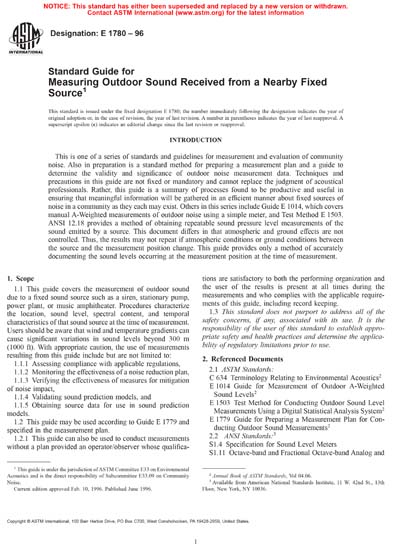Historical
ASTM E1780-96
Standard Guide for Measuring Outdoor Sound Received from a Nearby Fixed Source
This guide covers the measurement of outdoor sound due to a fixed sound source such as a siren, stationary pump, power plant, or music amphitheater. Procedures characterize the location, sound level, spectral content, and temporal characteristics of that sound source at the time of measurement. Users should be aware that wind and temperature gradients can cause significant variations in sound levels beyond 300 m (1000 ft). With appropriate caution, the use of measurements resulting from this guide include but are not limited to: 1.1.1 Assessing compliance with applicable regulations, 1.1.2 Monitoring the effectiveness of a noise reduction plan, 1.1.3 Verifying the effectiveness of measures for mitigation of noise impact, 1.1.4 Validating sound prediction models, and 1.1.5 Obtaining source data for use in sound prediction models. 1.2 This guide may be used according to Guide E1779 and specified in the measurement plan. 1.2.1 This guide can also be used to conduct measurements without a plan provided an operator/observer whose qualifications are satisfactory to both the performing organization and the user of the results is present at all times during the measurements and who complies with the applicable requirements of this guide, including record keeping. 1.3 This standard does not purport to address all of the safety concerns, if any, associated with its use. It is the responsibility of the user of this standard to establish appropriate safety and health practices and determine the applicability of regulatory limitations prior to use.
ASTM International [astm]

